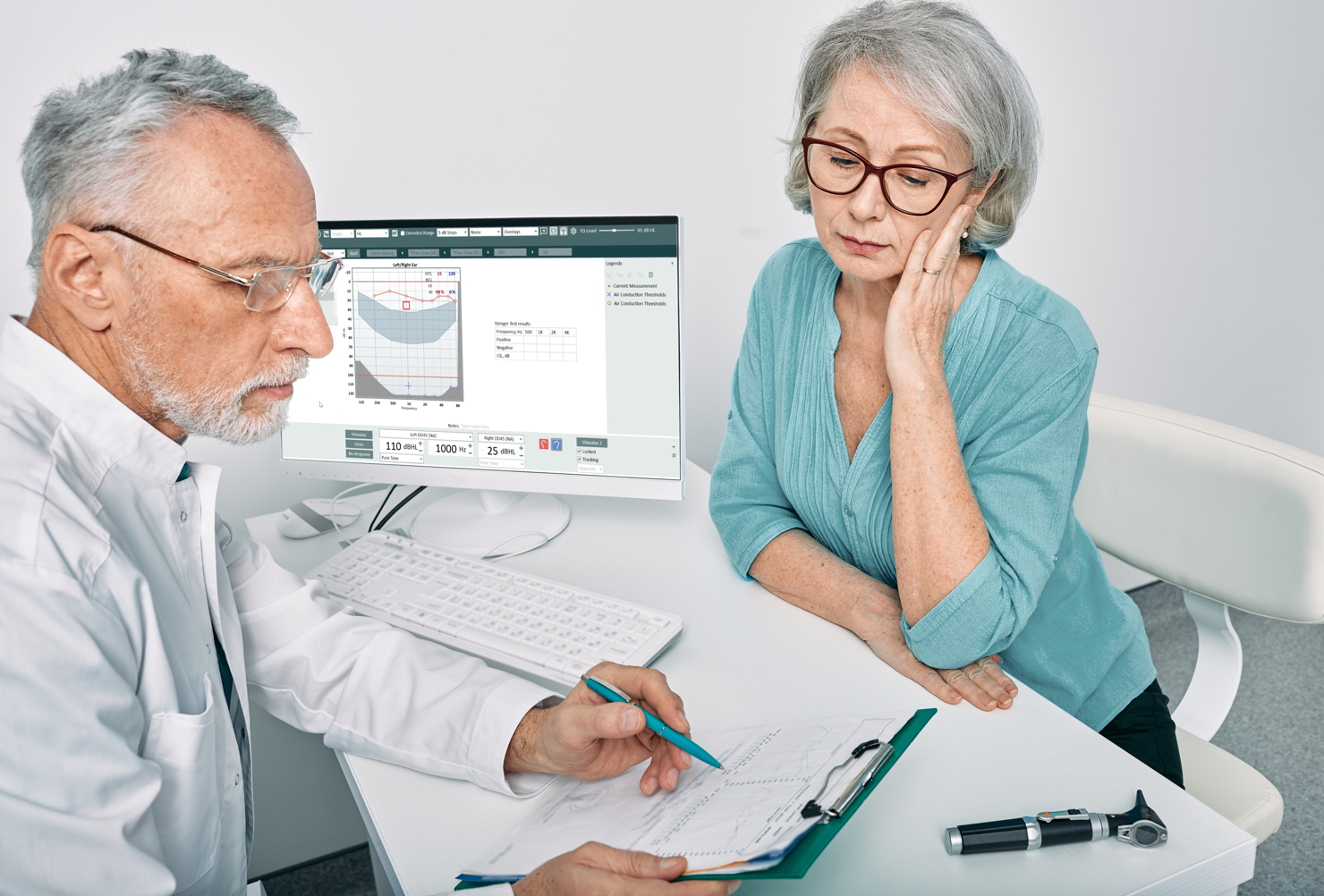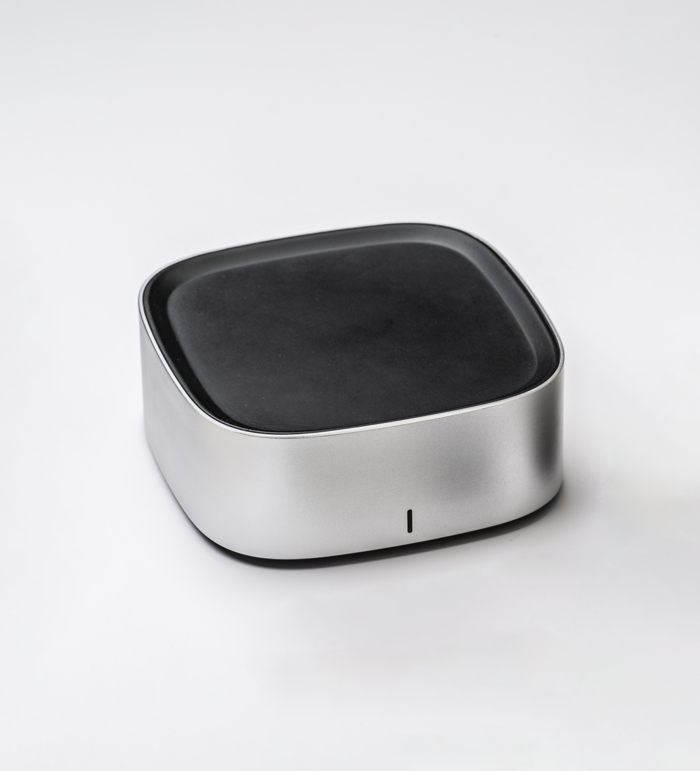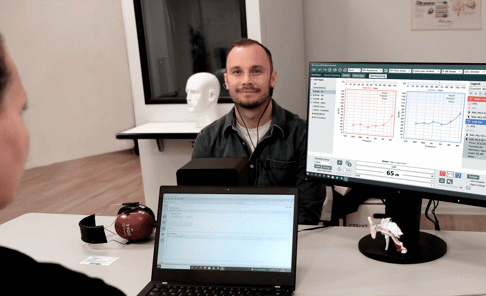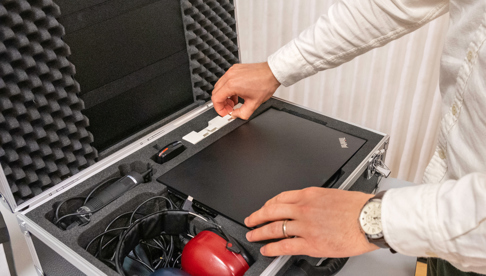
The Role of The Stenger Test in The Diagnosis of Hearing Loss

While rare, most audiologists will eventually encounter a patient with Non–Organic Hearing Loss – in other words, an individual presenting with a lack of consistency in audiological testing. These patients are also often referred to as “malingerers.” This presents a difficult situation for providers, both socially and clinically! Several objective measures, like otoacoustic emissions (OAE), auditory brainstem response (ABR), and acoustic reflex thresholds (ART) can be used to parse out true versus functional hearing loss, but the Stenger test is a good way to quickly and behaviorally screen for non-organic hearing loss in certain scenarios.
What is the Stenger Effect? The Stenger Test Explained
The Stenger test is based on the principle of binaural hearing, which means that the brain processes sound information from both ears to create a perception of sound. When two sounds of the same frequency and intensity are presented to each ear simultaneously, the brain perceives them as a single sound. The Stenger effect, on which the Stenger test is based, states that when a sound is presented to both ears, the listener perceives only the tone in the ear of the higher presentation level. This test is useful in determining if an individual presenting with unilateral profound hearing loss is providing true and accurate responses or not.
How to Perform a Stenger Test
When performing a Stenger Test, a tone is presented simultaneously to both ears at any given frequency. The intensity, however, differs between the ears. In the better ear, the presentation level should be 10 dB better than the threshold originally obtained. In the poorer ear, the presentation level should be 10 dB below the original threshold. The tones can then be presented, but with increasing intensity in the poorer ear, and the individual is asked to respond as normal.
This test can be completed immediately following pure tone audiometry without repeating instructions. It may, in fact, be more useful if the patient is not alerted to the fact that the test method has changed.
Interpreting Results
The results of the Stenger test are described as either positive or negative. With a negative Stenger test, the patient will continue to respond to the tone when it is presented simultaneously, meaning they are perceiving it in the better ear and the threshold of the poorer ear is true. With a positive Stenger, the patient will not respond to the simultaneous tones as they are perceiving the tone in the ear they are attempting to pass as poorer.
It is important to note that while the Stenger test can be helpful in identifying non-organic hearing loss and unilateral hearing loss, it may not be useful in all cases. For example, if a patient presents with bilateral hearing loss, the Stenger test may not be able to accurately determine if the loss is true or functional. Additionally, other objective measures should be used in conjunction with the Stenger test to confirm results.
Stenger Test with Auditdata Measure
Seamlessly Transition From The Stenger Test To Audiometry with Auditdata Measure
With the new Measure audiometer, you can add the Stenger test to your test battery for these individuals is simple. The Stenger test can be added via your Measure software and displayed or hidden in your printed audiogram. The Measure Software will calculate intensity levels and make sure the presentation is simultaneous to both ears for you to ensure accuracy when testing. Audiologists can then simply mark positive or negative at the tested frequency. As noted above, it can be useful to perform the Stenger immediately following pure-tone audiometry without informing the patient that the test method has changed. The Measure solution makes this possible by having your battery flow seamlessly from pure tone testing to the Stenger.

Other Blogs You Might Enjoy:

The History of Audiometry and The Evolution of Audiometers
In short, audiometry is the study of the sensitivity of an individual’s hearing that has been performed for more than 150 years! An audiometer is a tool used to ascertain this information. This blog elaborates on the history of audiometry, and the evolution of audiometers as these are closely intertwined with not only each other but the advancement of the field of audiology as a whole.

Are Real Ear Measurements Necessary?
Real Ear Measurements (REM) – also called Probe Microphone Measurements (PMM) – are considered the gold standard in hearing aid fitting and verification, allowing audiologists to determine whether a hearing aid user is receiving the precise level of amplification needed at every frequency to maximize their hearing. This blog explains how REM can improve customers’ hearing, as well as drive better business outcomes and serve as a key differentiator for hearing clinics.

Good Things Come in Small Packages: The Benefits of a Portable, Digital Audiometer
Increasingly, hearing clinics are expanding their reach, taking their audiologists and equipment on the road to deliver care to people with mobility issues, transportation challenges, illnesses, etc. For people that are unable to travel to your clinics, it’s valuable to be able to bring hearing care directly to the end user. Visiting customers in their home – where they feel safe and relaxed – allows them to feel more comfortable during their hearing exams.
Don't Miss Out On the Latest Insights On Audiology
Sign up today to receive exciting updates, tips, and the latest newsletters from Auditdata.





